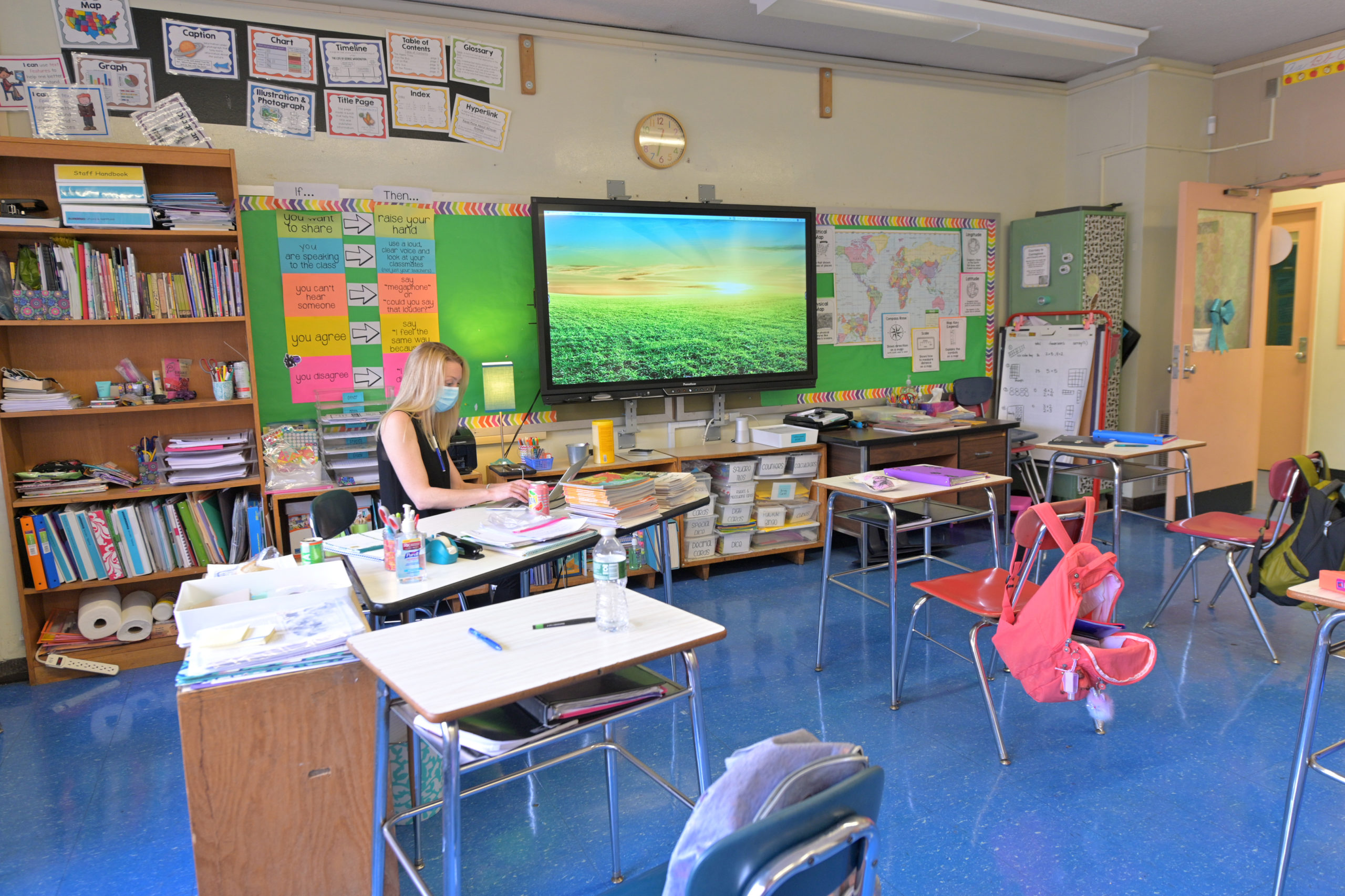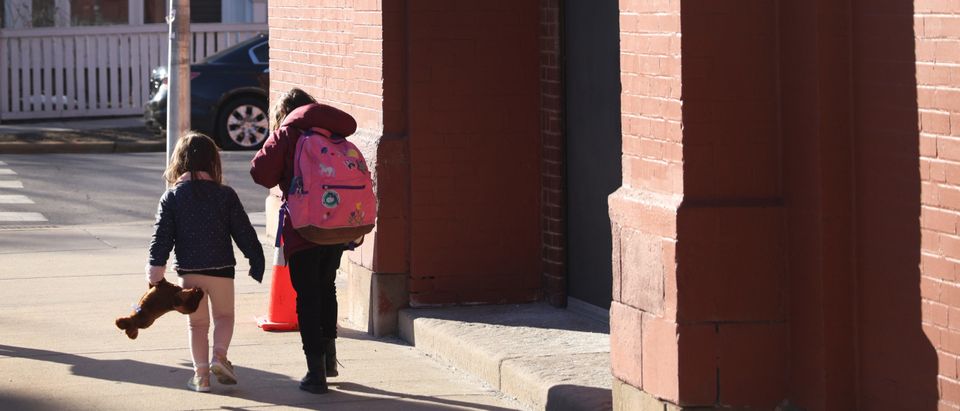Approximately 3 million students may have been missing from their schools for one year, and chronic absenteeism has surged as virtual learning and effects of the pandemic have created a barrier between many students and their education, according to a new study.
Roughly 3 million of the “most educationally marginalized students in the country” have not attended school, virtually or in-person, since March 2020, according to a study by Bellwether Education Partners. Many states have also reported a decrease in enrollment numbers, largely due to parents choosing to skip kindergarten for their children, but many students still remain missing, according to ABC News.
 An empty classroom is seen at Hollywood High School on August 13, 2020 in Hollywood, California. (Photo by Rodin Eckenroth/Getty Images)
An empty classroom is seen at Hollywood High School on August 13, 2020 in Hollywood, California. (Photo by Rodin Eckenroth/Getty Images)
There were 50.7 million students in public schools and 5.7 million students in private schools in the U.S. in the 2020-2021 school year, according to the National Center for Education Statistics.
Some parents in Michigan have opted to skip enrolling their children in kindergarten, while others have decided to homeschool instead, accounting for a 40,000 student decrease in enrollment, a trend in other districts as well, ABC reported.
Minneapolis saw a 16% decrease in kindergarten enrollment, while Los Angeles saw a 14% drop, and Colorado saw a 9% drop, according to ABC.
But 13,000 students in Michigan still weren’t fully accounted for. In Texas, 12,000 students in the 153,000-student Dallas Independent School District were unaccounted for.
In Florida, nearly 88,000 students in the state did not show up for school in the fall, which is 3% of the state’s total student population, Florida House Speaker Chris Sprowls said in a letter to school leaders, ABC reported.
Many students, mostly from low-income and minority families, do not have access to WiFi or computers that are necessary for virtual learning.
“They have logged off. They don’t feel connected enough to their own learning to log on every day,” Mike Magee, CEO of Chiefs for Change, an education advocacy group, told ABC.
The digital gap impacts rural and minority students the most, and has exacerbated a “homework gap,” acting Federal Communications Commission (FCC) chairwoman Jessica Rosenworcel told Axios in a February report. Thirty percent of parents or guardians in households with an income of less than $50,000 said their internet access is inadequate for remote school, a Marketplace-Edison Research Poll showed in October.

Emily Valentine, a teacher at Yung Wing School P.S. 124 works while her students take a recess break during the first day back to school on December 07, 2020 at Yung Wing School P.S. 124 in New York City. (Photo by Michael Loccisano/Getty Images)
Many children are also facing the economic impact from COVID-19, which may have resulted in family members losing jobs. Teenagers who are able to work may have opted to do so instead of attending school in order to help their family make ends meet, according to ABC.
Schools have seen a surge in chronic absenteeism, which is defined by the Department of Education as missing school for at least 15 days, Attendance Works, a group that tries to solve chronic absence, told ABC.
“In Connecticut, for example, chronic absence has risen from 12% in the 2019-20 school year, to 21% in the first half of the 2020-21 year. For English-learners, the rate has doubled from 17 to 35%; and for students eligible for free meals, it’s up from about 20 to 35%,” Hedy Cheng, director of Attendance Works, told ABC.
Many districts have developed programs to recapture missing students by frequently reaching out to them through emails or letters, or through door-to-door visits by school officials.
But for students who are not brought back into the school system, the long-term impact could include being under-prepared for college or careers after graduation, and health ramifications.
“You are going to have a whole generation of kids who are not well enough prepared for college and careers. You are going to have significant increases in mental, social and emotional well-being issues with kids,” Magee told ABC. (RELATED: ‘My Life Is Very Vague And Lonely’: High School Seniors Give Disturbing Responses To Virtual Schooling Survey)
The National Alliance on Mental Illness reports that the lack of social interaction that can negatively affect adults is also found to cause or exacerbate mental health conditions in children up to a decade later. Virtual learning has upended the critical sense of stability in children’s lives that can come from established learning schedules, seeing peers, or participating in extracurricular activities, leading to a sense of alienation among students.












